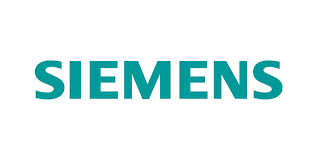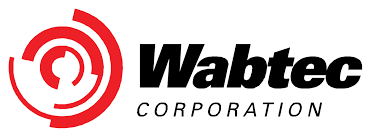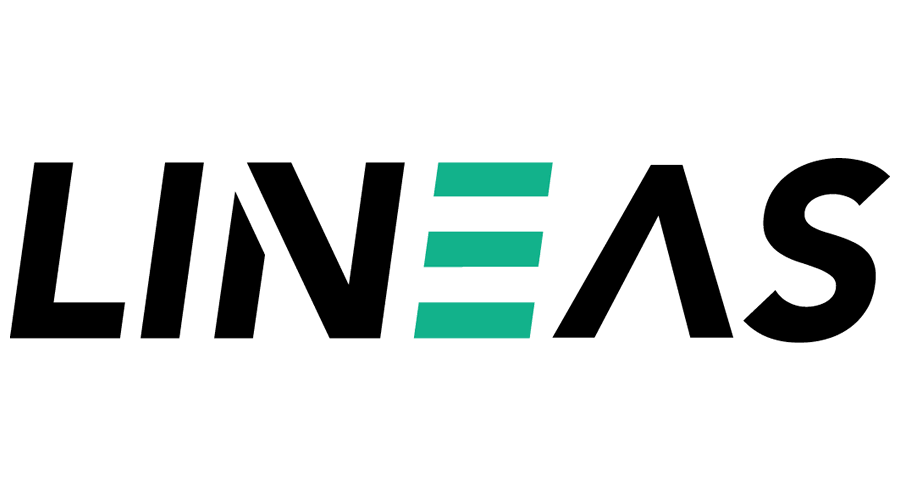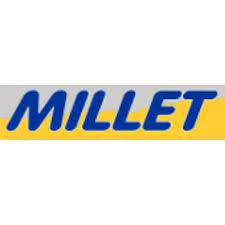Synthèse
The global rail transport market, estimated at $427.3 billion in 2020, is set to reach $561.7 billion by 2026, with an average annual growth rate (CAGR) of 4.7%, with passenger transport expected to grow at a CAGR of 5.2% to reach $316.4 billion by 2026. In line with global trends, the French rail market is an important one in Europe, with an extensive network of over 30,000 km. Rail industry production is dominated by rolling stock and signalling equipment, with a focus on digitization and improving the consumer experience. The sector is preparing for liberalization, with SNCF renewing its offerings in response to private competition, particularly in freight, where it faces aggressive pricing policies in alternative transport markets.
Although the French market faces challenges, as evidenced by the reduction in the total length of rail lines from over 30,500 kilometers to less than 27,500 kilometerstres, government investment in rail, including a 3.5 billion euro renewal plan for regional trains, and projects such as the Grand Paris Express, demonstrate strong support. Demand for rail equipment in France and Europe is mainly driven by rolling stock construction, aging infrastructure and government investment. The avian flu pandemic had a considerable impact on rail transport in 2020, with a 42% drop in SNCF passenger numbers and similar declines in the various rail services, underlining the volatility of the market in times of crisis.
The structure of the market is set to change, with increased competition expected after liberalization in 2023, reinforcing the need for innovation and innovation.the need for innovation and competitiveness among key players such as Alstom, Bombardier and Siemens, alongside emerging global competitors like CRRC.
Sustained growth in a changing landscape : Demand for rail transport in France
Exploring the dynamic contours of the French rail transport market, we observe a field experiencing sustained growth, complemented by eminent recalibration of market structures and competitive incursions. This link between infrastructure and mobility is a flourishing economic artery that stimulates trade and connectivity. The French rail industry, a major player in the global market, is continuing its upward trajectory, in parallel with global market expansion trends. Public funding strongly influences the passenger rail market, which distinguishes it from the freight sector characterized by vigorous participation by private entities. Despite the challenges posed by price competition in air, bus and river transport, the French rail sector, motivated in part by its ecological footprint, is ready for liberalization - a move that should reinvigorate the market landscape with new entrants and innovations. Esteemed for its leading role, SNCF is in the vanguard, reorganizing its offerings to maintain its competitive edge.
From a global perspective, the rail transport market is robust, projected to grow from around US$427 billion to over US$561 billion by the mid-2020s. Europe, albeit with disparities between member states, is demonstrating concerted efforts to increase and modernize rail's share of trade, thanks to ambitious projects such as the "European Year of Rail".
A closer look at the French market reveals a mixed picture. The total length of rail lines operated shows a contraction, signalling changes in demand and infrastructural challenges. However, SNCF, despite a significant decline in revenues due to the avian flu pandemic, has shown a general upward trend in annual sales since the early 2010s. In particular, passenger rail transport reflects a resonant increase, with volumes between 95 and 105 billion passenger-kilometers signaling a robust demand profile for mass transportation. The freight segment, although less important than passenger transport in terms of volume, echoes a steady level of activity, with annual volumes fluctuating between 85 and 95 million taxed tons. Investment plans are giving considerable impetus to demand for rail transport equipment. France's commitment to renovating its TGV fleet, revitalizing regional trains and upgrading urban transport vehicles is catalyzing demand for rolling stock. Large-scale initiatives such as the Grand Paris Express project, which represents an investment of around €40 billion, and SNCF tenders are amplifying the momentum, ensuring the supply and maintenance of contemporary rail systems. These investments.
"Rail giants: at the forefront of rail innovation and expansion"
The rail industry is defined by a combination of long-standing expertise and innovative forces driving the market forward. The sector's leading companies have not only shaped the landscape, but continue to drive advances in technology, service and sustainable practices. Here's a look at some of the major players whose efforts are writing their names into the annals of rail history and paving the way for a more connected world.
- Alstom - With a global presence, Alstom is a titan of the rail transport industry. Its state-of-the-art portfolio includes everything from high-speed trains to metros and streetcars. Of particular note is the acquisition of Bombardier Transportation, which reinforces Alstom's position as a market giant, especially in the field of sustainable mobility solutions. Alstom is at the forefront of innovation, advocating more energy-efficient trains and leading major projects such as the €2.7 billion contract for 100 TGVs.
- Bombardier - Before its acquisition by Alstom, Bombardier was a household name in rail construction. The Canadian giant had a wide reach, manufacturing not only rolling stock, but also venturing into aerospace. Its products were internationally renowned for their quality and reliability, and with Alstom, their legacy of excellence continues.
- Siemens - A pillar of the industry, Siemens has long been a rival to Alstom in the international rail transport market. With a strategic focus on automation and signalling, Siemens continues to expand its presence and technological mastery, always seeking to shape the future of mobility through innovation and in-depth research and development.
- Thales - A leader in signalling and control equipment, Thales plays an essential role in ensuring the safety and efficiency of railroads. Its systems are integral to the smooth operation of railroads worldwide, and support the industry's move towards digitized, automated and integrated networks.
- Hitachi - Hitachi has become a formidable global player after acquiring Ansaldo Breda and completing the takeover of Ansaldo STS. Its expertise encompasses the entire range of rail transport equipment, meeting the needs of modern infrastructures and technological advances in the field of public transport.
- CRRC - Originating from China, CRRC is the world's largest supplier of rail transport equipment, with the most comprehensive product ranges and the most advanced technologies. Its dominance of the Chinese market is unrivalled, and its forays into international territories represent a growing threat to the established order.
à la compréhension de ce marché
Détail du contenu
 Informations
Informations
- Nombre de pages : 30 pages
- Format : Version digitale et PDF
- Dernière mise à jour : 05/10/2021
 Sommaire et extraits
Sommaire et extraits
1 Market overview
1.1 Overview of the rail industry market
The rail industry refers to all economic activities relating to the production, sale and maintenance of vehicles for transport on railways. hicles, both passenger and freight, sometimes referred to as "freight".
The global rail market is growing , and is expected to continue to do so over the next few years. The production of rail technology accounts for a significant proportion of sales in this market.
The French passenger and freight transport market is following this global growth trend, in which it plays an important role.
France is also one of Europe's leading countries, behind Germany, in terms of train use as a means of transport, in terms of the number of kilometers traveled by individual passengers. Similarly, in terms of track built, the French and German networks dominate the European market.
The production of rail technologies is divided as follows: rolling stock, followed by signalling equipment, infrastructure works and other miscellaneous equipment. We also note theimportance of the digitalization of trains (for people) and the investments made to improve the consumer experience.
The passenger rail market is directly linked to public funding, unlike the freight sector, which is made up of numerous private players.although appreciated for its lower environmental footprint, rail transport faces stiff competition and aggressive pricing policies in the air, bus and river freight markets. The forthcoming liberalization of the sector is set to shake up the market with the arrival of new players. SNCF is focusing in particular on renewing its offer.
1.2 A growing global market underpinning increased trade
Global market characteristics
The global rail transport market was estimated at ***.* billion US dollars in ****, and is expected to reach a size of ***.* billion US dollars by ****, with a CAGR (***) of *.*% over the same period. Passenger transport, in particular, is expected to grow at a CAGR of *.*% to reach US$***.* billion ...
1.3 A mature French market
Since ****, the total length of rail lines operated in France has been steadily decreasing, falling in * years from over **,*** kilometers to less than **,*** kilometers. This decline can be explained by a number of factors: these may include a drop in demand for rail links in certain regions or areas, or the ...
2 Demand analysis
2.1 Breakdown of demand for rail transport equipment
France is one of Europe's leading manufacturers of railway rolling stock, thanks to its industry and its leading railway equipment manufacturers (***).
The main source of activity for the French rail industry is rolling stock construction. This is followed by the manufacture of signalling, safety and control equipment, the manufacture of parts, ...
2.2 Passenger and freight transport: indirect determinants of demand for rail transport equipment
At national level, **% of passenger transport demand (***).
Naturally, as trains are used for longer, more occasional journeys, demand for rail transport is less regular:
Frequency of train and RER use by the French in their daily commute France, ****, in % Source: ****
Whether for personal or business travel, demand for rail transport is ...
2.3 Demand for rolling stock boosted by government investment plans
As the leading player in regional development, the French government regularly invests in the development and maintenance of the rail network. Investments are made in the form of multi-year financing plans for various projects. These projects are designed, financed and managed not only by the French government, but also by local ...
2.4 Direct determinants of national demand for railway equipment
The main determinants of demand for railway equipment are :
The obsolescence of the equipment used in France. An example of equipment that could be a source of a further increase in demand for rail equipment is the average age of rail tracks: ** years in France, almost twice as old as in ...
2.5 Demand trends based on Covid-19 effects
Rail transport was heavily impacted by the health crisis at the start of ****, in the same way as other modes of transport. The regulatory measures introduced in the first half of **** (***) had a major impact on passenger transport, but also on overall economic activity, which may have had an impact on ...
3 Market structure
3.1 French rail market players and the upcoming overhaul
The players in this market can be divided into three categories:
Rolling stock manufacturers, such as Alstom, Bombardier, Siemens... Signalling and control equipment manufacturers, such as Thales, Hitachi via its subsidiary Ansaldo STS France... Equipment manufacturers (***), such as Wabtec, Knorr Bresme, KTK Seats...
The number of players in the rolling stock ...
3.2 General structure of the French rail market
If we focus on the French railway structure and study the evolution of the number of locomotives, we see that both diesel and electric locomotives are decreasing in number sincelectric locomotives have been declining in number since ****, in roughly equivalent numbers, bearing in mind that electric locomotives are slightly less numerous ...
3.3 Characteristics of rail companies
Within the French rail system, there are the rail companies responsible for passenger and freight transport, as well as the infrastructure managers responsible for the following tasks:
Access for railway companies to the rail infrastructure of the network for which they are responsible, including the allocation of traffic slots (***) Operational management ...
4 Offer analysis
4.1 A range of products driven by needs and technologies
The characteristics of the trains marketed by manufacturers depend mainly on the type of transport and customer targeted (***).
The train prices offered by manufacturers are generally fixed intenders, and negotiations make these prices volatile.
It should be noted that the train offer is more extensive for passenger transport, which can be ...
4.2 Summary of digital trends and developments
Good growth prospects for the French rail industry
Forecasts for growth in the international passenger and freight transport market, the sustained attractiveness of the French rail industry and government investment plans in the French rail sector are the main reasons behind the positive growth outlook for the French rail industry.
The ...
5 Regulations
5.1 Regulations governing the rail market
Railway-related activities are subject to a number of legal constraints. The most significant legal texts are listed below (***). There is a growing convergence of rail standards and regulations on a European scale with the aim of harmonizing and facilitating the transport of people and goods.
Ona national scale, the law of ...
6 Positioning the players
6.1 Segmentation
Main players in the French rail market :
- Société nationale des chemins de fer français (SNCF)
- Alstom
- Bombardier
- Siemens
- Wabtec
- Lineas France
- Captrain
- Millet Wagons
- Transdev
- Rail Logistique Europe
- Thales
- Trenitalia
- Le Train Voyage
- Lahaye global logistics
- TSO (NGE Groupe)
- RENFE
- Railcoop
- Getlink
- Europorte (Getlink)
- Eurostar
- DB Cargo France
- Colas Rail (Bouyghes)
- Railpool
- Ermewa Steem Group
- VTG
- Combronde Groupe
- Touax
 Liste des graphiques
Liste des graphiques
- Estimation de l'évolution du chiffre d'affaires du marché du transport ferroviaire
- Classement des pays du monde selon l'indice de qualité de leur réseau ferroviaire
- TCAC du marché ferroviaire mondial pour 2021-2023 par rapport à 2015-2017, par région
- Chiffre d'affaires des principaux pays européens pour le transport ferroviaire interurbain de voyageurs
- Chiffre d'affaires des principaux pays européens pour le transport ferroviaire de fret
Toutes nos études sont disponible en ligne et en PDF
Nous vous proposons de consulter un exemple de notre travail d'étude sur un autre marché !
Dernières actualités
Entreprises citées dans cette étude
Cette étude contient un panorama complet des entreprises du marché avec les derniers chiffres et actualités de chaque entreprise :
 Choisir cette étude c'est :
Choisir cette étude c'est :
Accéder à plus de 35 heures de travail
Nos études sont le résultat de plus de 35 heures de recherches et d'analyses. Utiliser nos études vous permet de consacrer plus de temps et de valeur ajoutée à vos projets.
Profiter de 6 années d'expérience et de plus de 1500 études sectorielles déjà produites
Notre expertise nous permet de produire des études complètes dans tous les secteurs, y compris des marchés de niche ou naissants.
Notre savoir-faire et notre méthodologie nous permet de produire des études avec un rapport qualité-prix unique
Accéder à plusieurs milliers d'articles et données payantes
Businesscoot a accès à l'ensemble de la presse économique payante ainsi qu'à des bases de données exclusives pour réaliser ses études de marché (+ 30 000 articles et sources privées).
Afin d'enrichir nos études, nos analystes utilisent également des indicateurs web (semrush, trends…) pour identifier les tendances sur un marché et les stratégies des entreprises. (Consulter nos sources payantes)
Un accompagnement garanti après votre achat
Une équipe dédiée au service après-vente, pour vous garantir un niveau de satisfaction élevé. (+33) 9 70 46 55 00
Un format digital pensé pour nos utilisateurs
Vous accédez à un PDF mais aussi à une version digitale pensée pour nos clients. Cette version vous permet d’accéder aux sources, aux données au format Excel et aux graphiques. Le contenu de l'étude peut ainsi être facilement récupéré et adapté pour vos supports.
 Nos offres :
Nos offres :
The rail transport market | France
- Quels sont les chiffres sur la taille et la croissance du marché ?
- Quels leviers tirent la croissance du marché et leur évolution ?
- Quel est le positionnement des entreprises sur la chaine de valeur ?
- Comment se différencient les entreprises du marché ?
- Données issues de plusieurs dizaines de bases de données
Pack 5 études (-15%) France
- 5 études au prix de 75,6€HT par étude à choisir parmi nos 800 titres sur le catalogue France pendant 12 mois
- Conservez -15% sur les études supplémentaires achetées
- Choisissez le remboursement des crédits non consommés au terme des 12 mois (durée du pack)
Consultez les conditions du pack et de remboursement des crédits non consommés.
- 22/02/2024 - Ajout des informations de l'entreprise Touax
- 05/01/2024 - Ajout des informations de l'entreprise Combronde Groupe
- 29/10/2023 - Ajout des informations de l'entreprise VTG
- 29/10/2023 - Ajout des informations de l'entreprise Ermewa Steem Group
- 29/10/2023 - Ajout des informations de l'entreprise Railpool
- 03/09/2023 - Ajout des informations de l'entreprise Colas Rail (Bouyghes)
- 03/09/2023 - Ajout des informations de l'entreprise DB Cargo
- 03/09/2023 - Ajout des informations de l'entreprise Eurostar
- 03/09/2023 - Ajout des informations de l'entreprise Europorte (Getlink)
- 03/09/2023 - Ajout des informations de l'entreprise Getlink
- 03/09/2023 - Ajout des informations de l'entreprise Railcoop
- 03/09/2023 - Ajout des informations de l'entreprise RENFE
- 03/09/2023 - Ajout des informations de l'entreprise TSO (NGE Groupe)
- 30/08/2023 - Ajout des informations de l'entreprise Lahaye global logistics
- 25/07/2023 - Mise à jour des données financières de l'entreprise Alstom
- 25/07/2023 - Mise à jour des données financières de l'entreprise Thales
- 04/07/2023 - Ajout des informations de l'entreprise Le Train Voyage
- 21/02/2023 - Mise à jour des données financières de l'entreprise Siemens
- 13/01/2023 - Ajout des informations de l'entreprise Trenitalia





 Alstom va vendre une partie de ses activités de signalisation en Amérique du Nord pour 630 millions d'euros - 20/04/2024
Alstom va vendre une partie de ses activités de signalisation en Amérique du Nord pour 630 millions d'euros - 20/04/2024
 Grâce au rachat de l'activité ferroviaire de Thales par Hitachi, l'italien Mer Mec arrive en France - 15/04/2024
Grâce au rachat de l'activité ferroviaire de Thales par Hitachi, l'italien Mer Mec arrive en France - 15/04/2024
 Transdev cède à l'attrait de l'international - 20/03/2024
Transdev cède à l'attrait de l'international - 20/03/2024
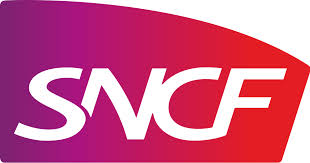 SNCF Réseau, le maillon faible du groupe - 29/02/2024
SNCF Réseau, le maillon faible du groupe - 29/02/2024
 TGV : le marché français résiste plus que prévu à Trenitalia - 08/02/2024
TGV : le marché français résiste plus que prévu à Trenitalia - 08/02/2024

